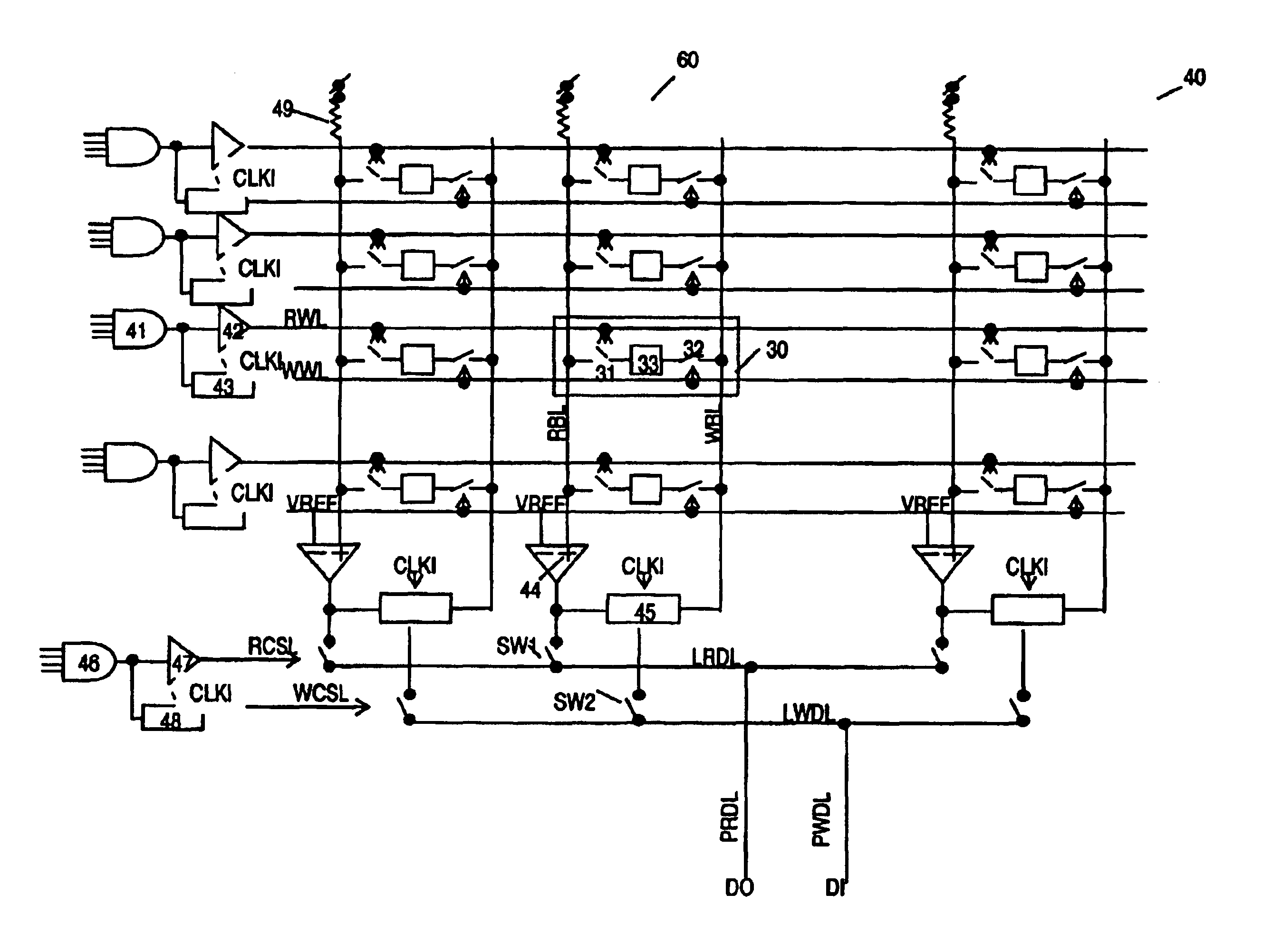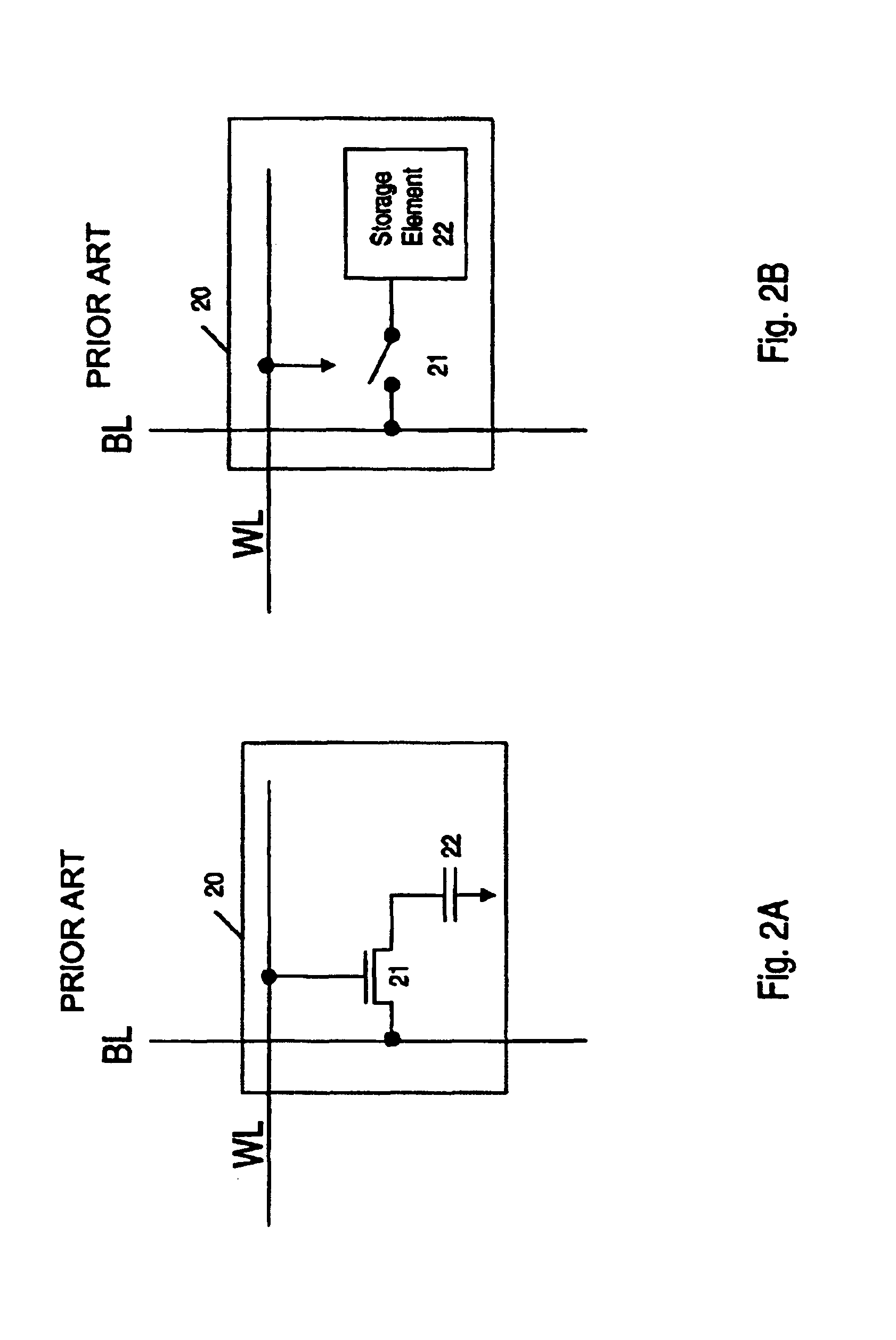High performance gain cell architecture
a gain cell, high-performance technology, applied in static storage, information storage, digital storage, etc., can solve the problems of longer write cycle time, higher performance circuit, data in the storage element is destroyed (destructive read),
- Summary
- Abstract
- Description
- Claims
- Application Information
AI Technical Summary
Benefits of technology
Problems solved by technology
Method used
Image
Examples
Embodiment Construction
FIG. 4 shows a single-ended destructive write multi-port memory array architecture, according to the present invention. The memory architecture 40 includes a plurality of single-ended destructive write multi-port memory cells 30, each consisting of a read port 31, a write port 32, and a storage element 33. The cells are organized in a matrix formation by way of a plurality of rows, each coupled to the read wordline RWL and write wordline WWL, and a plurality of columns, each coupled to read bitline RBL and to write bitline WBL. Each RWL and WWL is supported by a common row decoder 41, a read wordline driver 42, and write wordline latch and driver 43. Alternatively, each read and write wordline drivers 42 and 43 have an independent row decoder 41. Each read bitline RBL is supported by a read sense amplifier 44 and a precharged device or resistor 49, and each write bitline WBL, by bitline write circuit 45. A common column decoder 46 services a read column select driver 47 and a write ...
PUM
 Login to View More
Login to View More Abstract
Description
Claims
Application Information
 Login to View More
Login to View More - R&D
- Intellectual Property
- Life Sciences
- Materials
- Tech Scout
- Unparalleled Data Quality
- Higher Quality Content
- 60% Fewer Hallucinations
Browse by: Latest US Patents, China's latest patents, Technical Efficacy Thesaurus, Application Domain, Technology Topic, Popular Technical Reports.
© 2025 PatSnap. All rights reserved.Legal|Privacy policy|Modern Slavery Act Transparency Statement|Sitemap|About US| Contact US: help@patsnap.com



